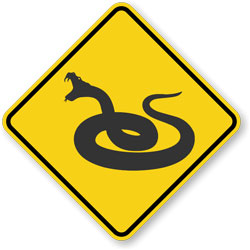
Warning: This post is about venomous snakes and contains multiple photos of one of those said snakes. Proceed according to your comfort level.

Yesterday, we received almost three inches of rain in a very short period of time. The creek behind our house overflowed the low water crossing and shut down traffic for a few hours. It also apparently disturbed some of the resident wildlife.
Our house sits on a lot that slopes down toward said creek, and when we get copious quantities of precipitation, the runoff forms some pretty significant streams at the edge of our property. Debbie and I were looking out at them from one of our bathroom windows when I spotted a small snake sliding over a retaining wall into the lawn.
From a distance, it appeared to me to be a copperhead. That excited me, because even though I know they are found in this general area, I’ve never spotted one. I grabbed my phone, an umbrella, and a pair of boots, and went searching for the little guy while Debbie kept an eye on him through the window.
She was able to point me in the right direction, and I took a few photos…like this one:
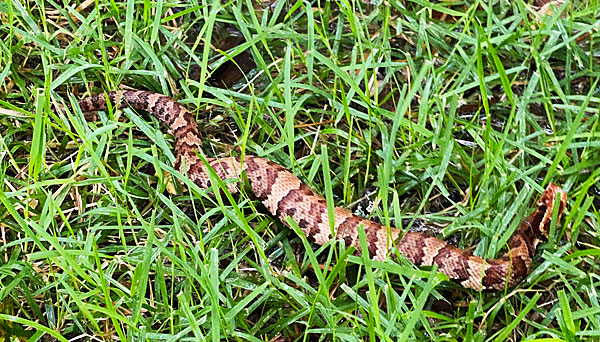
The snake was about 18″ long, so it was easy to lose sight of him in the grass.
After a couple of minutes of me pointing my phone in his face (note: I’m referring to the snake as a “him,” but I have no idea how to sex a snake and I’m not interested in learning if it involves getting any more personal), he made an about face and slithered into one of the streams rushing toward the creek. When we last saw him, he was caught up in the current going over the retaining wall. Adios, amigo!
Back inside, I was able to get a closer look at the details of the snake, and realized that it wasn’t a copperhead after all, but a juvenile cottonmouth (aka water moccasin). I did post a photo on the Central Texas snake ID page to get confirmation, where the patient moderators explained for the hundredth time how to distinguish between the two species. Based on the comments on that Facebook post, brightly colored juvenile cottonmouths confuse a lot of folks, so the photo offered a good lesson on identification.
In any event, our excitement was over as we bid farewell to our visitor.
Or so we thought.
About an hour later, the rain had stopped and I asked Debbie if she wanted to walk down an look at the low water crossing. I went out through the front door ahead of her, and opened the gate to our courtyard…and almost stepped on the same snake (or an identical twin) that we had earlier seen swept down to the creek!
It was lethargic from the chilly rain, so I once again started taking pictures. (And yes, our walkway tends to get really muddy from heavy rainfall runoff; that’s why it appears that the snake is resting in a quagmire.)
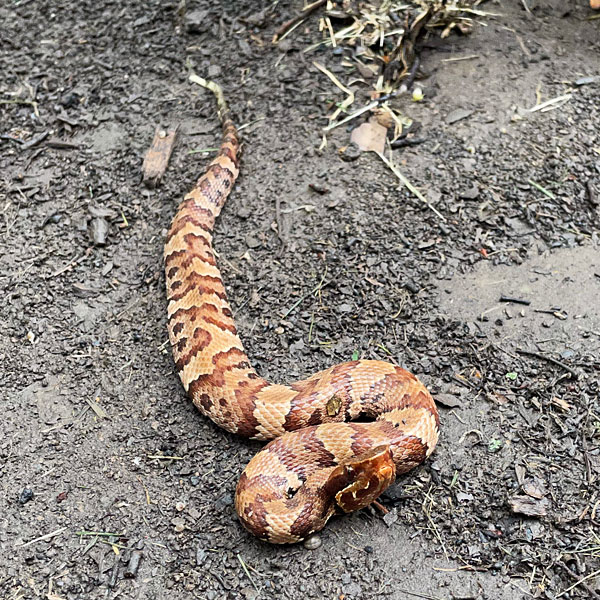
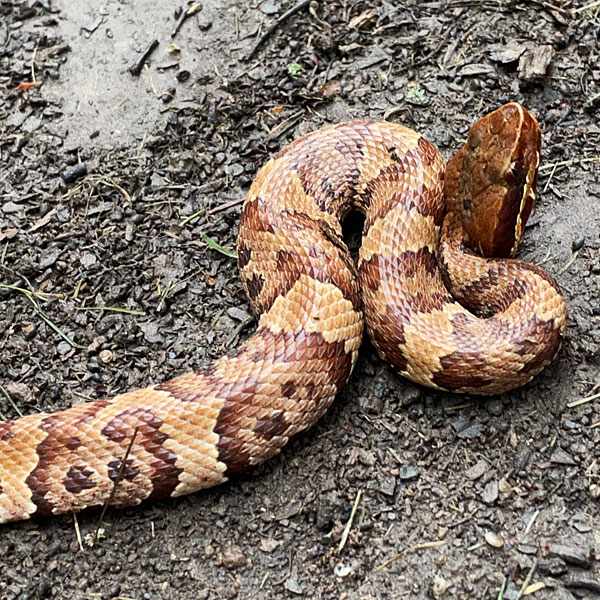
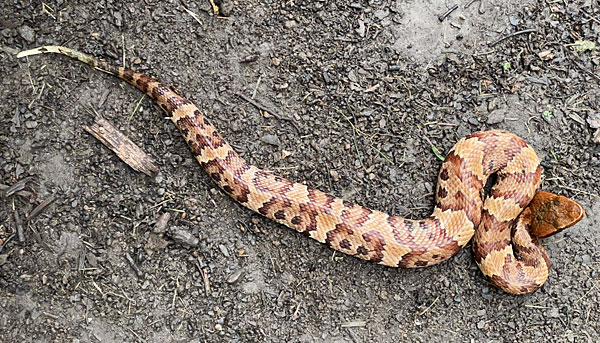
Two key identifiers for cottonmouths are the jagged edges on the pattern on their back (copperheads generally-but-not-always have smooth-edged patterns that resemble Hershey’s kisses) and the black horizontal stripe across the eyes (see the middle photo above; these stripes are absent from copperheads).
Neither of us were particularly thrilled with the prospect of having a resident cottonmouth in our courtyard (or anywhere in our yard, for that matter), so I asked Debbie to go into the garage and get my snake tongs so we could relocate him.
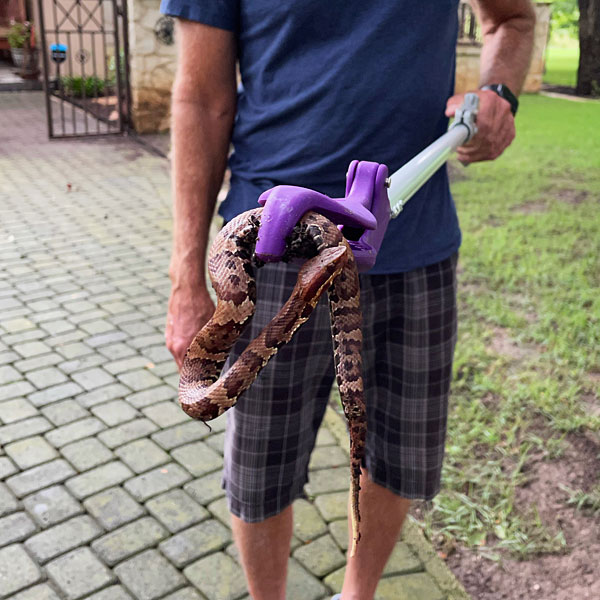
The snake was unappreciative of my desire to relocate it to a more desirable (to us, anyway) location and it argued a bit with the tongs.
The preceding photo provides another lesson, this time regarding the often-misleading perspective of photos. If one didn’t know better, one might think this is a much larger snake than it really is, and is perhaps closer to me than might be advisable. I assure you that I was never even close to the business end of this serpent.
I realize that some of you (OK, ALL of you) will think I’m weird for getting excited about this interaction, but whether we like it or realize it, we coexist with wildlife in many shapes, and to me, this is simply one pretty cool variation.
Discover more from The Fire Ant Gazette
Subscribe to get the latest posts sent to your email.
